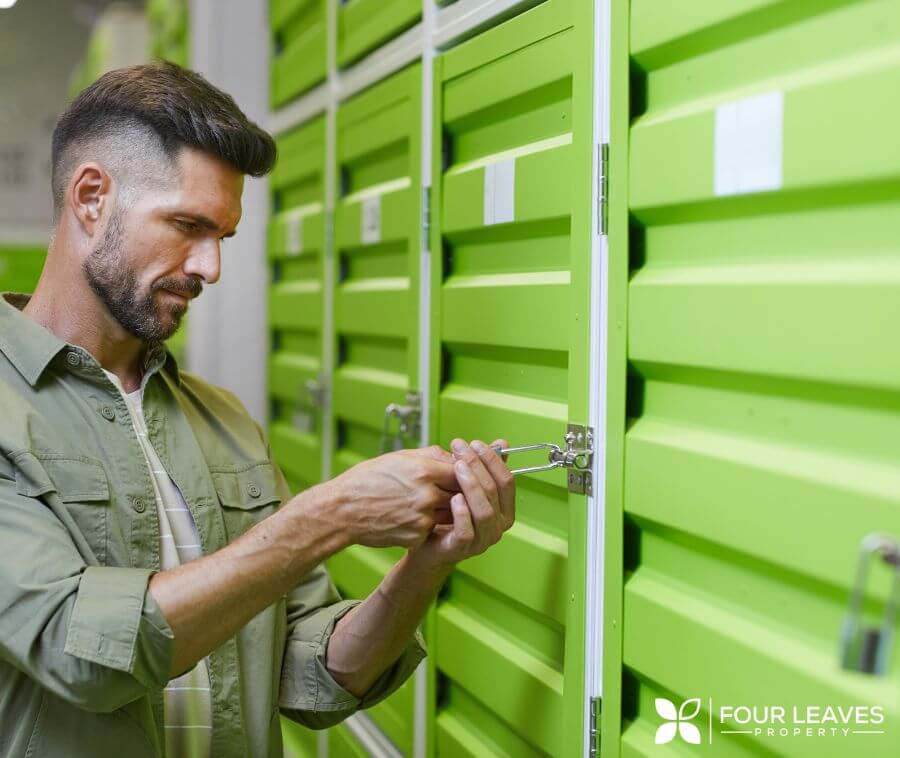
Self Storage Market Update – H1 2024
Four Leaves Property is a multi-disciplinary real estate business specialising in performance optimisation, value maximisation and strategic repositioning of self storage assets for divestment and refinance. We are licensed real estate agents and registered valuers across Australia and New Zealand, with a wealth of experience in the self storage asset class.
It’s been a busy start for Four Leaves. After 24 months of reduced activity in self storage sales, 2024 is set to become a memorable year for activity.
To date, Four Leaves has successfully negotiated four major transactions and listed a further five assets for sale, at a combined value of over $200 million. Further, we are aware of five other deals in the market at an estimated value of over $100 million for established self storage facilities. To put this into context, the expected H1 result for 2024 is above the total result for 2023 and the total result for 2022.
So why is more stock coming to the market this year?
1) The level of investor demand for self storage assets has never been stronger
Traditional self storage investors continue to dominate, new investors are funded with a strong appetite to break into the tightly held storage market and established mid-tier investors have teamed up with capital groups for their next phase of growth.
There are four layers of investors in the current self storage market actively seeking opportunities to acquire operating self storage facilities –established major owners; non-traditional major investors; mid-tier investors/syndicates and private investors. With the continued growth strategy of the major investor groups, and the increased capital chasing the stability, diversification and strong growth of self storage, a highly competitive investment landscape has reemerged, particularly for prime assets in core markets.
2) Revenue growth continues for self storage
As the broader property market is impacted by longer vacancies, larger incentives, higher capital expenditure requirements and increased risk in the current environment, self storage has become a target sector for investors turning their focus from office and retail to alternative sectors such as self storage.
Self storage draws upon a diverse customer base that occupies storage units on monthly storage agreements. Customers use storage for a vast array of reasons, liked to all types of situations regardless of the strength of the economy. They are not locked into a fixed lease with a fixed rental growth structure. The benefits of this arrangement are threefold – it’s attractive to the end user as it provides flexibility; it allows the operator to adjust market rates regularly in response to demand; and it reduces commitment risk for both customers and operators. For investors, this can prove to be more rewarding than fixed rental increases in traditional real estate investments. It also protects self storage investors from major tenant default risk.
3) The fundamentals for self storage demand remain strong
Whilst revenue growth has returned to single digit rates, it remains strong on the back of the return of overseas migration, continued interstate migration, and the ongoing housing shortage across many parts of Australia and New Zealand. We predict continued normalised growth for the next 12 to 18 months until the pressure on household income eases. This, along with a rebound in the housing market, is likely to bring the next phase of strong revenue growth to the sector.
Another important consideration is that the projected new supply pipeline is not eventuating as expected; a direct result of inflated construction costs, issues with securing construction funding and a lack of understanding of self storage fundamentals by new developers. As self storage awareness increases as a solution to a range of personal and business requirements, demand is likely to remain strong in most markets.
4) A limited number of established ‘A Grade’ self storage facilities were offered to the market in 2022 and 2023
Following a record year for core city assets being sold in 2021, which included a number of major portfolio divestments, limited core assets were transacted in the past 24 months. This year, a number of prime assets have become available, and demand is stronger than ever.
With the increased cost of debt, capitalisation rates have demonstrated some softening for secondary stock in secondary markets. However, this has not been the case for prime assets in major cities, where self storage assets rarely become available for purchase. And when they do, they are hot property.
The transactions that have occurred this year suggest that prime capitalisation rates have not moved since the record lows achieved in 2021 which was the most active self storage market witnessed to date. Self storage assets in major cities such as Sydney are now mostly held by the major owner groups leaving few prime assets available to target for purchase. Along with the strong level of industry consolidation, high barriers to entry and difficulties constructing in these core cities mean that these prime markets are becoming almost untouchable.
As we approach the halfway mark, it is becoming apparent that 2024 will be a big year for self storage sales. A year we are certainly excited to see unfold.
ALSO READ:

Linda Sharkey | Managing Director Four Leaves Property
Linda is a self storage sales, valuation, and optimisation expert, with coverage and experience across Australia and New Zealand. As the founder of Four Leaves, Linda is passionate about the unique insights the business brings to her clients, and loves to see them grow through knowledge.
